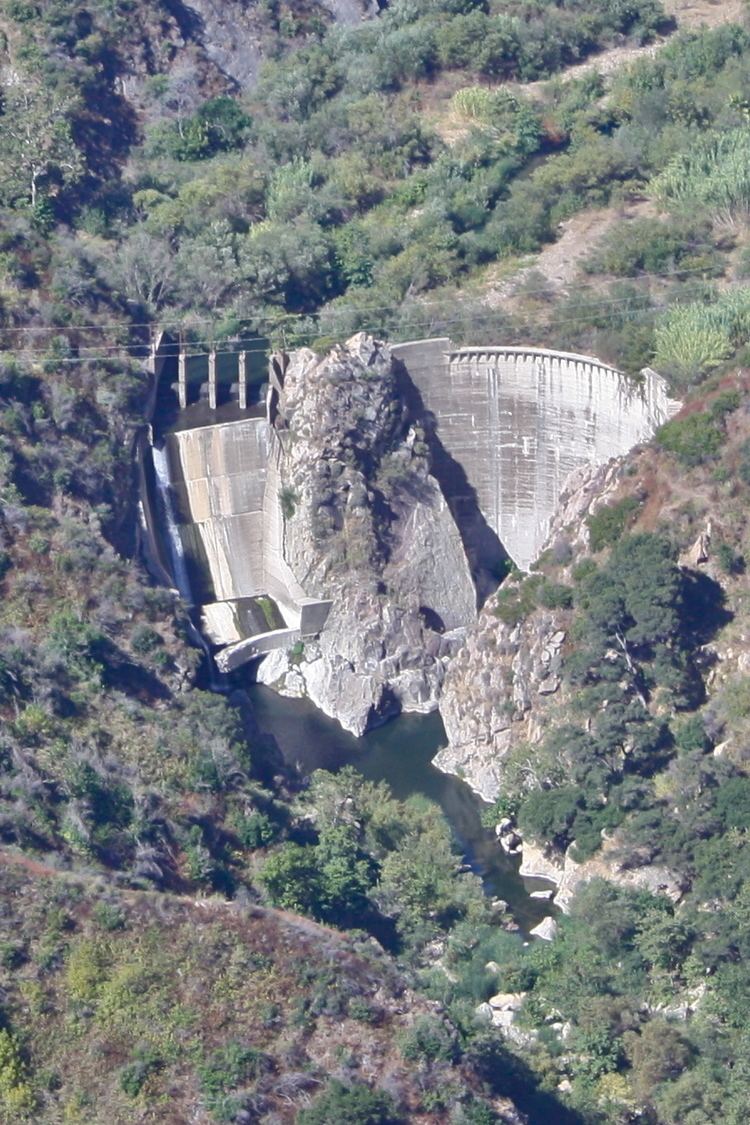Opening date 1924 | Type of dam Concrete thin arch Height 30 m | |
 | ||
Owner California Department of Parks and Recreation Similar Malibu Creek, Adamson House, Malibu Creek State Park, Matilija Dam, Malibu Lagoon State Bea | ||
The 100-foot-tall (30 m) Rindge Dam on Malibu Creek is located in Malibu Creek State Park, about three miles from the coast of Malibu, California. It is situated just northeast of Malibu Canyon Road, from which it is only partially visible (from the turnouts south of the tunnel).
Contents
Map of Rindge Dam, Malibu, CA 90265, USA
HistoryEdit
The main concrete arch of the Rindge Dam was completed in 1924. The spillway of the dam was finished in 1926. The dam was built by hired workers of May Knight Rindge, who owned the Malibu Ranch, the former Rancho Topanga Malibu Sequit, at that time. The frame of the dam was constructed out of the rails of a 15-mile railroad that went through the Malibu Ranch, after it was dismantled. The dual walls of the dam were built into an already-existing rock monolith in the center of Malibu Creek; the only place they meet is at the top.
The 600 acres (240 ha) behind the dam have been completely filled with sediment since around 1950, which creates a waterfall from Malibu Creek. The dam became incorporated into Malibu Creek State Park in 1976.
Conservation — demolitionEdit
Fish advocates have called for the dam's removal because it is blocking Steelhead trout from accessing the upper reaches of the Malibu Creek watershed. Others have campaigned in vain for the designation of the Rindge Dam as a California Historical Landmark. The Rindge Dam is property of the California Department of Parks and Recreation and the structure has been in disrepair for decades. The dam was declared off-limits to the public in2014.
The dam will possibly be removed, but no conclusive decision has been made yet. Estimates for the cost of demolition have been as high as $80 million. There has been much speculation as to what exactly would happen if the Rindge Dam were removed or collapsed, and to where its remnants and over 85 years of impounded sediment would go.
